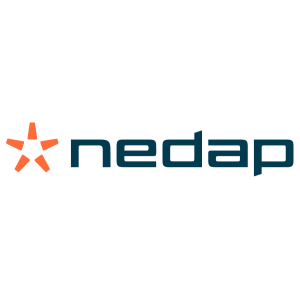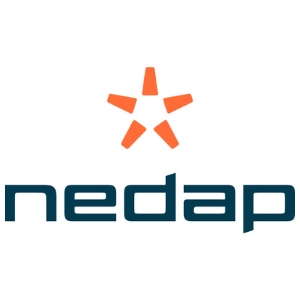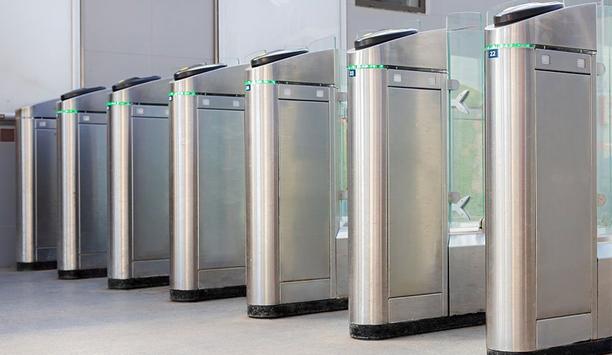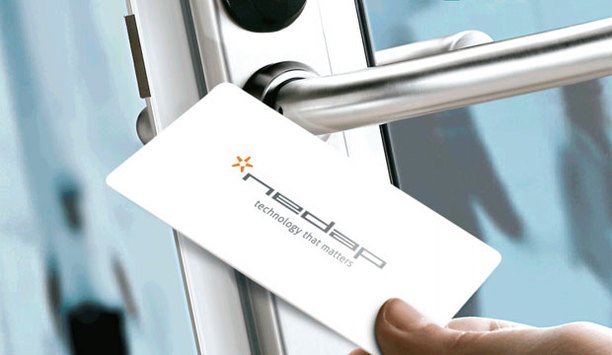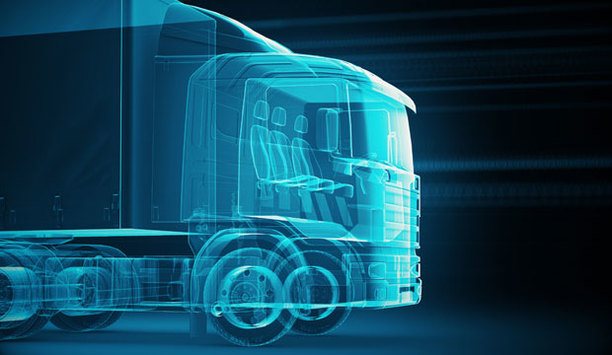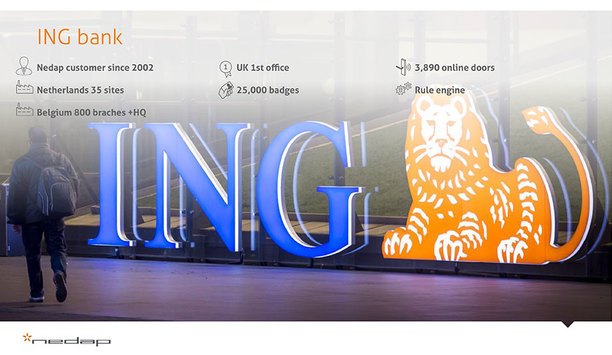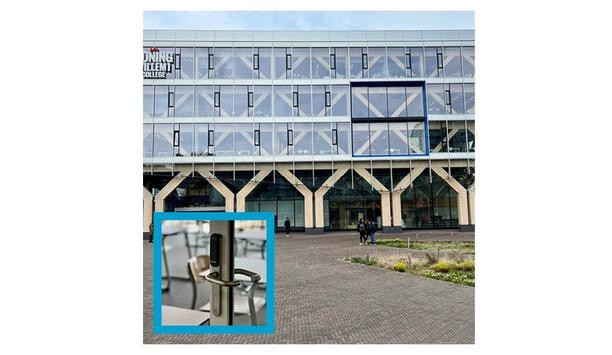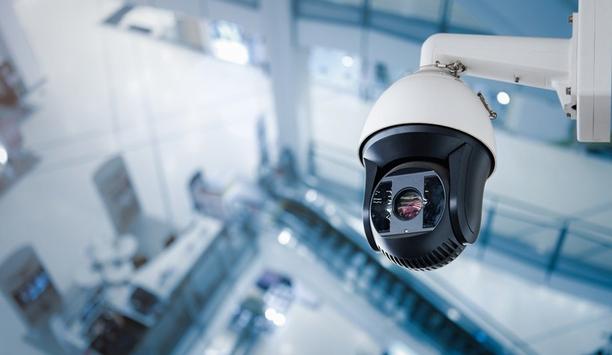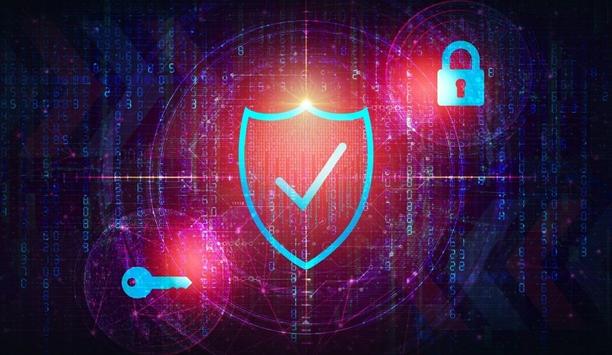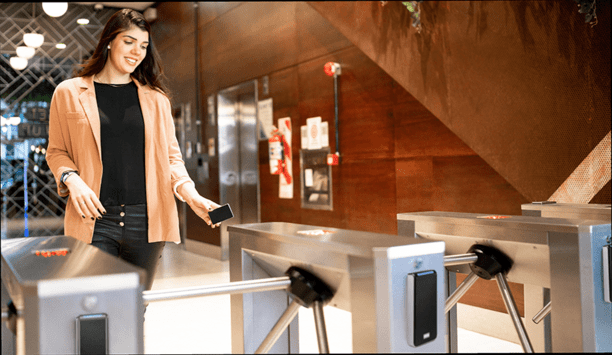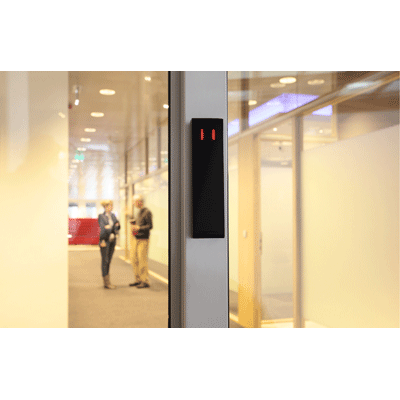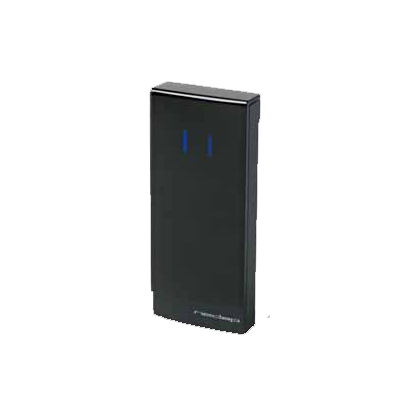Nedap - Experts & Thought Leaders
White papers from Nedap
Achieving frictionless physical access control with AEOS
DownloadAccess control: Bringing efficiency to your lifts' automatic destination system
Download6 ways access control can contribute to your business continuity
Download3 reasons to migrate to a new access control system
Download5 steps to finding the right access control system for you
DownloadDo you know the weakest link of your access control system?
DownloadHow to select an access control system in 5 steps
DownloadNedap’s long-range Radio Frequency Identification (RFID) systems for Automatic Vehicle Identification (AVI)
DownloadLatest Nedap Security Management news & announcements
Manufacturer ROCKWOOL International A.S. has chosen Nedap’s Global Client Programme to secure its offices and factories worldwide. AEOS, the physical security platform by Nedap, installed during the programme, enables ROCKWOOL to establish a truly global security policy and unified work processes. An advanced project rollout, the Global Client Programme is developed for large multinationals and offers several benefits, including standardisation across sites, shorter implementation times and cost efficiencies. Standardising company’s security measures The Global Client Programme connects all of ROCKWOOL’s factories and office premises, and standardises the company’s security measuresROCKWOOL has 28 factories across the world. The Global Client Programme connects all of these factories and ROCKWOOL’s office premises, and standardises the company’s security measures throughout the world. Fokko van der Zee, managing director at Nedap Security Management, says: “The implementation of a standardised security solution across the world is a complex process. It involves a large project spanning many years and involving many stakeholders, and demands a high level of project management. In the absence of a structured program with defined guidelines, a global security rollout is likely to be a stressful execution. That’s why we set up our carefully designed Global Client Programme.” ROCKWOOL Digital Service Lead, Matthew Thorne, agrees: “We’ve worked with Nedap over the past few years and recently became a member of their Global Client Programme. Now we’re equipped with the people and tools we needed to standardise our physical security solution. The Global Client Programme also minimises risk and guarantees compliance. It really meets our needs in every possible way.” Central security platform saves money The programme helps achieve cost savings by avoiding initial setup costs per site and having one central security platform instead of severalThe Global Client Programme is designed to ensure monitoring and control during every step of the rollout process. Timon Padberg, responsible for business development at Nedap Security Management, explains: “The repetitive nature of local site deployments allows us to work with models and templates, such as standard proposal and calculation documents. We can therefore produce a scalable process that ensures uniformity and a consistently high quality of implementation across each site.” By using the Global Client Programme, ROCKWOOL is aiming for uniformity and alignment across all sites. The programme also helps achieve cost savings by avoiding initial setup costs per site and having one central security platform instead of several. Moreover, there are significant savings on operational and maintenance costs due to shared services and economies of scale.
Security management in banking is a discipline unlike any other. Rather than integrating all security into one centralised system, some banks choose decentralised security for their branch offices. AEOS, a leading platform in integrated security, turns out to be just as effective when deployed decentrally. ”We were already using Nedap AEOS in our headquarters, as well as various regional offices. Then, in 2011, the security system used by our 800 branch offices in Belgium needed to be extended with access control. Because we were already aware of AEOS’s capabilities and very satisfied with its performance, it was a logical step to ask Nedap to solve our problem.” - Joris de Greve, Security Manager at ING Belgium. Key management challenge ING’s 800 branch offices in Belgium were already equipped with autonomous intrusion detection and camera surveillance. All doors and their accessories, such as locks, push buttons and door contacts, were monitored and controlled by the intrusion detection system. Doors were opened and closed using keys in security cylinders. A central alarm management system handled alarms coming in from local intrusion control systems.It was virtually impossible to keep track of the physical keys and who was authorised to use them" Key management had become a problem, according to De Greve. ”It was virtually impossible to keep track of the physical keys and who was authorised to use them. We had no central database in which authorisations could be assigned or retracted.” In addition, changing locks, replacing keys and keeping key plans up to date had become difficult. “It was time for an electronic access control system,” explains Peter Rommens, Country Manager at Nedap Belgium. “Since all peripherals were connected to the intrusion detection system, the scope of the project was clearly defined. We were looking purely at access control at one or more doors per office.” Expanding the centralised AEOS system After considering a wide range of solutions, ING eventually selected two for further evaluation. One was to add access control to the existing intrusion detection systems. This was technically the least complicated option, because the basic infrastructure and necessary hardware were already in place. The other option was to expand the centralised AEOS system that was already up at headquarters and regional offices to include access control at the branch offices. The latter offered the major advantage of being able to connect all branch offices to one central database, while retaining the ability to delegate responsibility for authorisations to lower-level security management layers. Other benefits of this option included its system architecture, the proven stability of the system for large numbers of offices and cardholders, the system’s scalability and flexibility, the native IP controllers’ ability to communicate peer-to-peer and bypass the server, and the system’s redundant facilities and security (failsafe, switching servers, etc.). Flexible and extra secure The factor that clinched the deal was that AEOS allowed for decentralised management of separate units and the use of entrance filters. This meant local offices could be authorised to manage their own security without access to other offices’ data, Joris de Greve explains. “The bank’s security structure is based on central access to buildings and central facilitation of technical solutions, but decentralised security and access responsibility per zone. Therefore, the system must allow us to cluster cardholders into groups with different authorisations. AEOS supports this.”Cardholders who lose or forget their badge are issued a replacement while the original badge is invalidated" “Another factor was ING’s requirement that authorisations not be assigned to a badge, but to a cardholder,” adds Rommens. ”This builds in extra security: cardholders who lose or forget their badge are issued a replacement while the original badge is invalidated. This guarantees there are no unaccounted-for, authorised badges ‘floating around’. Decentralised approach ING combines centralised and decentralised policies. Overall security policy is set at top headquarters; security management there decides who is authorised to manage accounts and which authorisations may be assigned. This is part of the bank’s security structure. We ask ING Belgium Security Manager De Greve to illustrate. “For example, the Milan office uses a server in Belgium and the technical facilities provided by central security management. However, the management in Milan are in full control of who is allowed access to their building and when,” he says. User training is also decentralised. There are some 500 administrators, all of whom were trained internally and decentrally. AEOS enables this flexibility. Because AEOS is web-based, interventions are simply and swiftly carried out. Keeping an eye on things A consequence of decentralisation is the need for reports. “Central management wants to keep an eye on what is happening at the various branch offices,” De Greve says. ”Is security functioning properly? And are offices complying with security policy?” He believes reports “are also a valuable management tool.” For example: how many people are at work at any given time, or whether people only come in a few times a week. “This helps us to make sound decisions concerning flexible office space, for instance, and that’s an important way to reduce costs.” Proxy offices roll-out ING BE has two different types of offices: Proxy offices where all money is distributed by ATMs and Full Service where staff behind counters provide service. In both types of branches local staff is present and mobile specialists are available to respond to specific needs or questions customers may have. Nedap is currently installing AEOS at the 800 Belgian branch offices at an approximate rate of nine offices per week. Peter Rommens explains how the roll-out is being organised logistically: “In preparation for installation, ING centrally creates the appropriate authorisations in AEOS. Then, Nedap’s business partner defines the configuration and uploads this to the controller. This means on-site installation is quick; once the controller is connected and deployed, the system is up and running.”Each office is prepared for expansion of its access control or the addition of other security functionalities" AEOS at proxy offices “The bank preferred our proposed solution, with one AP4803x per branch office, over a solution with one or more AP6003 network controllers per office but only one AEpu per ten offices,” Rommens says. “Although having one AEpu per office is costlier, availability is more sure with the AP4803x and it offers more long-term advantages. It means each office is prepared for expansion of its access control or the addition of other security functionalities.” Proxy offices are defined as individual access control zones. Each office has its own profiles defining who is allowed access and on what basis. Proxy offices are secured with readers and a key replacement badge. The alarm system runs separately from the access control system. The badge only provides access, while arming and disarming the alarm system requires identification. In line with existing policy, if an unauthorised person finds a badge and tries to use it when the office is empty, this sets off an alarm. If a person tries to use a stray badge when the office is manned, he or she is immediately exposed by staff (social control). “Badges are also blocked based on expiry date or end of contract because in general the fewer badges in circulation and the fewer people with access, the smaller the security risk,” says De Greve.
Koning Willem I College in north-east Brabant, The Netherlands offers various educational and integration programmes. In total, around 18,000 students take 250 courses at its 16 locations. Modern educational institution A new location on Onderwijsboulevard in 's-Hertogenbosch was designed to be a model modern educational institution, including its access control. The imposing new building has modern rooms that provide opportunities for consultation, collaboration in small and large groups, presentations, and individual work. Access to these spaces required a flexible and modern locking solution ideally with as few keys as possible. Employees and students must feel welcome and safe. Need for an easily integrated system Dependable security was needed for all kinds of valuable learning materials and sensitive information Dependable security was needed for all kinds of valuable learning materials and sensitive information. “Easy integration with the existing access control system without additional software,” was the goal, according to Alex te Pas, functional manager of facilities management information systems. Keyless access for improved security and management “Within our organisation, we want to phase out the use of keys,” he says. “Because when employees left, we noticed that people often forgot to turn in keys or tokens. In the event of an audit, we then have a problem." Wireless Aperio locks The college chose Aperio locks which are easy to integrate wirelessly with their existing Nedap AEOS access control system. No additional software is needed: wireless Aperio locks communicate via Aperio Hubs which handle secure, real-time communication between locks and the AEOS system. This way, college security staff have full control over access and can quickly revoke anyone’s access rights. Saves time and costs The ongoing cost of using these battery-powered locks is also much lower than for equivalent wired electronic locks Because Aperio devices run on batteries, rather than mains power, there was no need to make any major adjustments to the doors. This saves both time and cost during installation. The ongoing cost of using these battery-powered locks is also much lower than for equivalent wired electronic locks, which require an ‘always on’ connection to the power grid to maintain secure status. Aperio E100 Escutcheon The college chose the Aperio E100 Escutcheon to secure doors throughout the building. The E100 offers a convenient combination of free exit from the inside with automatic locking on closure from the outside. It comes in a variety of specifications to fit different door security levels or everyday usage, including a version with PINpad which adds another level of control. 2-factor authentication With the additional PIN code, the risk of unauthorised access via a found or stolen pass is minimised. “We wanted to provide our technical rooms with 2-factor authentication. So here we chose Aperio locks with PIN code capability,” adds te Pas. Extending an AEOS system with Aperio wireless devices Nedap’s versatile AEOS access control system integrates seamlessly with a broad range of Aperio Nedap’s versatile AEOS access control system integrates seamlessly with a broad range of Aperio devices. End-users can get even more out of an existing Nedap AEOS system by integrating Aperio cylinders, escutcheons, handles, and more, online and/or offline, giving security managers control over traffic to and through more areas at their premises. Multiple device support Nedap integration supports multiple devices from the Aperio range, including the award-winning wireless handle (H100), escutcheon (E100), cylinder (C100), and security lock (L100). Aperio devices are available for almost any interior or exterior door, including wooden and glass doors, as well as fire doors. Online integration with AEOS can use different interfaces (RS485 / IP), connecting lock and system via hubs that control up to 16 locks. AEOS software A full set of powerful functions and events is made available for any Aperio device within the AEOS interface, including door or battery status and tamper detection. AEOS software manages everything, eliminating unproductive tasks including any need to duplicate data entry saving time, and extending control without hassle for building users or administrators.
Insights & Opinions from thought leaders at Nedap
With the rise of organised retail crime (ORC) making headlines, retailers are grappling with the dual challenge of safeguarding both their staff and store assets, while addressing the economic pressures that impact profitability and consumer demand. RFID technology The key lies in identifying effective solutions to counter the current surge in ORC, enabling retailers to secure their vulnerable staff and protect inventory for paying customers. Technology plays a crucial role in supporting brands on this mission, with RFID technology continuing to be a valuable solution. It aids retailers in gaining better control over retail crime, leveraging inventory data. The ongoing surge in retail crime Inflation has elevated the challenges around affording items, prompting criminals to target the retail sector Seen as a global issue, the British Retail Consortium recently reported that incidents of theft have increased by 27% across 10 of the largest cities in the UK, with some cities reporting up to a 68% increase. In the US, retailer Target reported an inventory loss of $500 million for 2023, amounting to a 100-basis point hit to gross margins in 2023. The current surge in theft is not attributed to a singular cause. Inflation has elevated the challenges around affording items, prompting criminals to target the retail sector. Lack of preventive measures A significant contributing factor is the lack of sufficient preventive measures by law enforcement, which in some cases has led to a rise in more severe incidents. However, the implementation of technologies like RFID allows retailers to efficiently build cases against criminals, putting them in a stronger position when it comes to reporting thefts. Not all retail crimes are orchestrated by large entities or executed through sophisticated methods. Some stores have seen a reduction in staff numbers and, as a result, there are fewer people on the shop floor, making it easier for shoplifters to carry out their activities unnoticed. The true impact of retail crime Over 70% of retailers believed the threat of ORC had increased over the past five years, according to a recent survey The impact of retail crime on businesses extends beyond financial and economic consequences; it has also led to a surge in violence against retail staff, an ongoing trend elevated by the pandemic. Over 70% of retailers believed the threat of ORC had increased over the past five years, according to a recent survey conducted by the National Retail Federation. This escalation in violence not only results in immediate repercussions but also contributes to long-term mental health issues for staff, fostering an atmosphere of insecurity that has compelled some retailers to close their physical stores. Policy implementation Given the challenge of staff retention across various businesses, addressing retail crime becomes an even more urgent matter. Additionally, retailers are wary of their employees facing potential danger and the prospect of legal action. Consequently, many have implemented policies prohibiting employees from actively intervening when confronted with shoplifters. Privacy concerns with facial recognition Retail crime also affects customers, as businesses seek to offset losses by raising prices Retail crime also affects customers, as businesses seek to offset losses by raising prices, further burdening financially strained consumers. The presence of visible security systems not only makes stores more hostile but also diminishes the overall customer experience. While facial recognition technology is considered a potential solution, privacy concerns have emerged in its various applications. Today’s problems, yesterday’s solutions Retailers are resorting to historic measures such as steel cables, physical monitoring, or plastic screens to resolve customer issues. However, the reality is that these solutions are unfit for solving the problem, causing friction for both customers and staff. Digital solutions The newer approach involves equipping retail staff with body cams and providing new training The newer approach involves equipping retail staff with body cams and providing new training to deter shoplifters. Some stores are even offering the police discounted food and beverages to encourage their presence. The responsibility lies with management teams to seek effective solutions. In an era dominated by data and technology, retailers must shift their focus from traditional security methods to digital solutions that align with the challenges of today’s society and modern retail environments. Shrinkage When discussing theft or organised retail crime, retailers commonly use the term "shrinkage," referring to not only theft but the broader issue of lost inventory. Additional drivers of shrinkage include damage, fraud, and internal theft. A significant problem arises as losses are often based on guesswork and estimates rather than concrete numbers. Retailers may lack a comprehensive understanding of their inventories, further increasing the issue of shrinkage. Combating shrinkage Utilising RFID technology notably helps in boosting inventory accuracy Some retailers still struggle with limited knowledge of the whereabouts of items, a challenge heightened by the issue of shrinkage. Utilising RFID technology notably helps in boosting inventory accuracy. This enhancement enables retailers to obtain a clearer understanding of their inventory and the precise locations of items. Comprehensive strategy Changes in the in-store experience have highlighted the relevance of RFID, especially as self-service checkouts encounter double the shrinkage levels compared to traditional checkout stores. To combat retail theft effectively, a comprehensive strategy should involve the integration of labels, deactivation, electronic article surveillance, and data analytics. This combination works synergistically to reduce shrinkage and enhance product availability. Retail data analytics platforms RFID data can swiftly alert nearby stores, providing an opportunity for staff to monitor shop floors Linking hardware to an underlying data analytics platform empowers retailers to make more informed decisions. Retail data analytics platforms delve into alarms, deactivations, and visitor metrics, providing a deeper understanding of theft patterns. RFID technology drives efficiency by pinpointing frequently stolen items, allowing for the identification of theft patterns. In instances of flash mobs in major metropolitan areas, RFID data can swiftly alert nearby stores, providing an opportunity for staff to monitor shop floors and incoming customers. Real-time optimisation The crucial question remains whether both shoppers and retailers are prepared to shoulder the responsibility for these additional precautions. Nevertheless, these changes leverage data more effectively, optimising loss prevention strategies almost in real-time rather than relying on biannual inventory counts, therefore transitioning from static to dynamic loss prevention. Holistic approach Striking a balance between security measures and providing a seamless shopping experience is key In a retail environment, not all items require protection, and prioritising the safeguarding of the most frequently stolen and valuable items can significantly impact shrinkage. A holistic approach to retail theft is imperative, considering the entire journey of an item through the retail environment. Striking a balance between security measures and providing a seamless shopping experience is key. Protection without hindrance As stores move towards being checkout-free, retail criminals (or ORC gangs) will be presented with lucrative opportunities to steal, so retailers need to be one step ahead by introducing unobtrusive and effective technology solutions. For example, case building can be improved with item-level data. RFID data offers a more precise means of assessing the value of stolen items compared to relying solely on CCTV. It provides detailed insights into the specific items removed from the store and the timing of these incidents. This proves beneficial in tracking repeat offenders. Increased visibility with a proactive approach The modern retail environment continues to evolve and criminals are never far behind. RFID technology plays a crucial role in minimising shrinkage by enhancing inventory visibility. Moreover, it leverages the power of data to stay ahead, enabling better predictions of retail crime and the formulation of prevention strategies. This proactive approach allows for the implementation of more tailored solutions to alter outcomes positively.
How can security system integrators not just survive but thrive in today’s IT-led market? The key seems to be in training. As increasingly more clients look to integrate access control with IT environments, they want integrators with the specialist skills to achieve this. For integrators that don’t invest in training, the risk is being left behind. Because many security system integrators aren’t providing specialist IT support, manufacturers are now offering services to make implementations and integrations easier. This isn’t a scalable or desirable option for many manufacturers though, they don’t want to become integrators. The result? Manufacturers will be pushed into developing products that can be integrated with IT networks off the shelf. And this isn’t necessarily the best option for end user, manufacturer or integrator. With a growing number of cloud-based security solutions, integrators also face the threat of clients opting for installation-only services. How security system integrators can survive and thrive today It’s not all doom and gloom for security system integrators though. To avoid becoming redundant, or being downgraded to simple access control installers, there’s lots you can do to strengthen your position. Listen carefully Many integrators are reluctant to do this, but it’s a great way to demonstrate the depth of your experienceOne of the first ways you can distinguish yourself from your competitors is by really listening to what your clients want and need. You can then translate this into a security or access control application tailored carefully to them. Many integrators are reluctant to do this, but it’s a great way to demonstrate the depth of your experience and product knowledge. It’s far superior to carrying out a standard implementation, which can leave clients feeling they’ve not been listened to or given good value. Up your IT knowledge TCP/IP has become the standard for communication between devices and central server applications in access control and security in general. So every technician now needs to know how to connect IP devices to networks and configure them in the central application. This is only the tip of the iceberg though, there’s so much more that integrators now need to be proficient in when it comes to IT. From understanding a client’s WAN, LAN and VPN networks to back-up systems, encryption technologies, key management and transparent communication. It’s also important to know how to integrate applications at server level, whether you’re integrating two or more security systems or a HR database. Most integrators have begun to invest in one or two IT experts, but this usually isn’t enough to meet clients’ needs. To really stay ahead, it’s crucial to invest more heavily in IT training and expertise. Choose your portfolio carefully When considering your portfolio, ensure you check the background of each product’s manufacturer Ideally, your portfolio should be small but rich, which is more difficult than it sounds. Choosing products that will scale easily is complex, and you need to consider the potential for increased functionality or connectivity as well as scalability. When considering your portfolio, make sure you check the background and outlook of each product’s manufacturer. You don’t want to select items that are likely to be discontinued in the near future, which can often happen after a manufacturer is acquired, for example. Get in the cloud In the security market, the mid and low segments are already shifting to cloud-based solutions that need neither integration nor IT skills. This leaves you with opportunities for just installation and maintenance services, where profit opportunities are reduced. An alternative is to begin selling cloud-based security services yourself to help you attract and retain clients for the long-term. Give clients added commercial value As competition increases and budgets shrink, offering added value, to new and existing clients, is a vital way to differentiate your business. This will help you to not just defend against competitors but to grow your business and increase your profitability. Configuring access control reports for clients is just one example. It’s relatively straightforward to do but provides really valuable insight into visitor flow. This can then enable them to, for example, staff reception adequately and provide sufficient catering, which all improves the experience for visitors and employees. Providing this kind of consultative service, instantly pushes you up the value chain. Stay agile and well informed To survive and grow as a security system integrator today, the upshot is that it’s crucial to keep pace with the market’s ever-changing trends, technology and client needs. And, to make sure you’re ready to adapt and give clients the services they want, it’s vital to give your people the in-depth training they need.
Security Essen 2018, held in Messe Essen, Germany, promised attendees a newly modernised trade show with a simplified layout and more interactive experience. Compared to previous years, halls were reorganised by technology area, with aisles laid out to make more direct pathways for attendees. The fair welcomed 950 exhibitors and more than 36,000 trade visitors from the global security market. Several manufacturers mentioned that footfall had been lighter than expected, but that the show had delivered on its promise to welcome more international visitors, in particular from the Middle East region. Exhibitors also grumbled about higher costs for booth space. Key security industry exhibitors Exhibitors expressed concern that the absence of key players reduced overall foot traffic Exhibitors praised the bigger aisles, which made it easier for visitors to navigate the show. However, some were unsure whether this was due to a better layout or simply because the show was missing key exhibitors. Notably absent were access control provider Dormakaba, security solutions company Honeywell, and surveillance providers Geutebruck and Dallmeier. Exhibitors expressed concern that the absence of key players reduced overall foot traffic. Security Essen hosted a particularly strong access control presence. Halls 2 and 3 were home to companies from across the access control and mechatronics spectrum. Sponsorship by EVVA covered the west entrance. The locking systems manufacturer, which celebrates its 100th anniversary next year, boasted significant floorspace. Exhibitors were pleased with the large access and locking presence, commenting that London-based IFSEC International tends to be dominated by video surveillance providers. EVVA, which celebrates its 100th anniversary next year, boasted significant floorspace Deep learning and artificial intelligence The push toward artificial intelligence (AI) in physical security continues, although the tone at Security Essen seemed to be shifting beyond hype and more toward how the technology can actually add value. For example, Hikvision’s cameras boasted more intelligence and processing power, and the company emphasised faster-paced product cycles. Customers ultimately do not buy AI – they buy benefits and solutions VIVOTEK embraced artificial intelligence as the biggest trend in the industry. The company demonstrated its latest deep learning technology for crowd detection applications. For Dahua, artificial intelligence allows users to easily search metadata in a video, including age and behaviour. Dahua demonstrated its solution for the transportation market, which is able to learn if a bus or train driver is falling asleep at the controls. However, some manufacturers chose not to focus on artificial intelligence. Representatives from Brivo and Eagle Eye Networks highlighted that customers ultimately do not buy AI – they buy benefits and solutions. Historically, video analytics were oversold and underdelivered, and the same could happen to AI if the term is overused in marketing security solutions. VIVOTEK embraced artificial intelligence as the biggest trend in the industry The German market & GDPR While the fair welcomed an increase in international visitors, many stands offered a distinctly German flavour. Exhibitors catered to German customers’ preference for data protection and high levels of privacy. Visitors were welcomed to the show by banners from Genetec, emblazoned with the slogan “Privacy matters… So, remember to forget me.” The video security provider’s stand demonstrated this concept more tangibly, via its Privacy Protector Module. The surveillance software, which is certified with the European Privacy Seal (EuroPriSe), monitors events while automatically pixelating people and vehicles in real time. If an incident occurs, an authorised operator can securely access the unaltered video. Visitors were welcomed to the show by banners from Genetec Other companies also acknowledged issues of privacy and cybersecurity. Hikvision noted that Europe is more regulated, which limits the implementation of the company’s products compared to those used in China. Dahua emphasised that its data for the German market is stored in Frankfurt to meet demands for data protection. IDIS made a point of saying there are no backdoors to their products. The deep learning products are easy to use and 96% accurate, says the company. FLIR has developed a cybersecurity hardening document, and strives to be transparent about cyber issues, including a web landing page where customers can raise any concerns. Vanderbilt is also pushing the cloud as a way forward with its ACT365 cloud-based access and video solution. Users are not intimidated by the cloud anymore since we all use it in our personal lives, says the company. Also on the access control side, EVVA were clear on the security of their AirKey mobile access system, which uses technology based on internet banking, double encryption and high-quality hardware. As well as demonstrating its SAROS thermal camera, FLIR strived for cybersecurity concerns to be addressed by customers Taking a broader view Nedap views security as being about allowing people to focus on their daily lives and work, safe in the knowledge that security is being taken care of. At the show, Nedap launched its new slogan ‘Security for Life’, stating that “true security is when you don’t have to think about it”. Nedap’s global client program represents a long-term commitment to projects. They are having more discussions with clients about risk management through standardisation and centralised policy.Solutions – as opposed to products – were also a focus at Security Essen, as at IFSEC before it Clients remain with Nedap because they keep investing in the platform, constantly updating the code and simplifying it to improve scalability for organisations, says the company. Nedap had one of the few double-decker booths at Security Essen. Solutions – as opposed to products – were also a focus at Security Essen, as at IFSEC before it. HID Global touted their extensive use of partnerships to provide solutions. SeeTec highlighted their move away from products to a more solution-based approach. FLIR, perhaps best known as a thermal camera company, were pushing their solutions approach to markets including intelligent traffic, smart city, video management and PSIMs. Nedap had one of the few double-decker booths at Security Essen Vertical markets in focus As vertical markets go, retail was big, and several players were offering some type of retail solution. Retail – along with banking, finance and transportation – was among Hikvision’s vertical markets of choice. Dahua's new panoramic cameras stitch together the image inside the camera instead of on the server SeeTec’s retail solution combines EAS with business intelligence and heat mapping. Dahua’s retail offerings include people counting and emotion detection, which can correlate with weather data, for example. Genetec also showcased a range of retail solutions. Technology improvements announced at Security Essen include FLIR's more robust FB6 series thermal line, Promise Technology's SMARTBOOST technology improved playback performance, and Videotec's cameras with better night performance. The extended 50m range of Optex's intrusion detection laser sensor reduces the need for cameras. Dahua's new panoramic cameras stitch together the image inside the camera instead of on the server. The Hanwha Techwin booth featured Korean flags and a “Korean at heart” motto to set the company apart Signs of the U.S. congressional ban There were signs at Security Essen of an impact of the recent U.S. ban on use of Hikvision and Dahua equipment in government installations, although both big Chinese manufacturers maintained a high profile at the German show. For example, the Hanwha Techwin booth featured Korean flags and a “Korean at heart” motto to set the company apart. Chinese camera manufacturer Uniview were keen to stress that they are not owned by Chinese government (neither is Dahua). Uniview’s all-IP camera line offers high resolution, low-light, multisensor and fisheye options, and AI software provides facial recognition, object detection, and fire and smoke detection at the edge. The company aims to increase its global presence with more international branch offerings and international factories.
A modern guide to data loss prevention
Download7 proven solutions for law enforcement key control and asset management
DownloadThe truth behind 9 mobile access myths
DownloadAccess control system planning phase 2
DownloadSecurity practices for hotels
Download

























